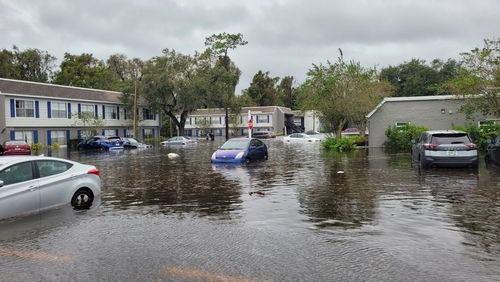
The Department of Homeland Security’s Federal Emergency Management Agency (FEMA) announced Wednesday it had published a final rule to implement Federal Flood Risk Management Standard (FFRMS).
The final rule provides a flexible framework to increase resilience against flooding and help protect communities, officials said. Additionally, it will reduce the risk of flood impacts, protect people and infrastructure and protect workers.
“The human and economic cost of flooding is devastating and will only grow in the years ahead as the impacts of climate change grow more intense and reach more communities,” Secretary of Homeland Security Alejandro N. Mayorkas said. “Taking forward-looking, effective steps to increase resilience before disaster strikes will save lives, property, critical infrastructure, and taxpayer money. The Federal Flood Risk Management Standard ensures that FEMA-funded projects meet that mandate. We cannot be passive as climate change threatens the safety and security of the American people and our homeland.”
The new standards incorporate the best available science to address current and future flood risk, making taxpayer-funded projects far more resilient to flooding, protecting federal investments and reducing the risk of damage and loss due to floods. The standard applies to FEMA-funded actions involving new construction, substantial improvement, or repairs to substantial damage.
“Climate change has exacerbated flood risk across the country, especially when it comes to sea-level rise. The Biden-Harris Administration is taking action to address these heightened risks by getting this new standard over the finish line,” FEMA Administrator Deanne Criswell said. “FFRMS will allow us to enhance resilience in flood-prone communities by taking future flood risk into consideration when we rebuild structures post-disaster. This is a huge win that will also allow us to end the repeat loss cycles that stem from flooding and increase the safety of families and save taxpayer dollars.”




